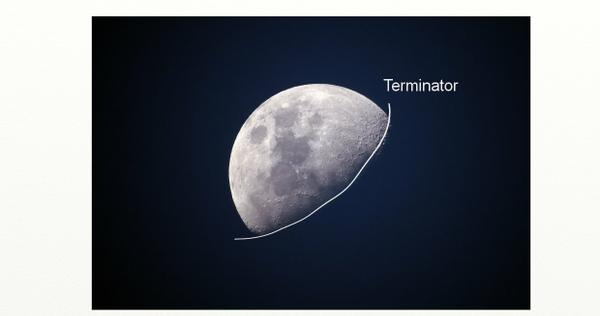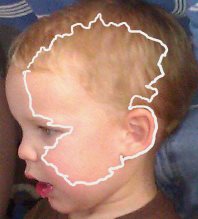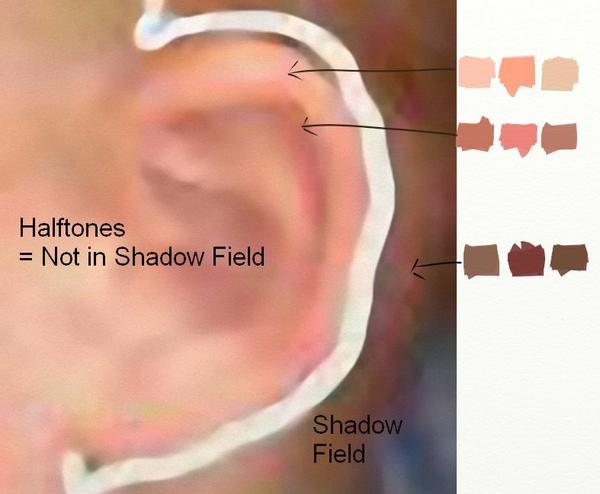We don't see it in a full moon, but it's there in all its other phases. It's called the terminator--that area where the earth blocks the sun's rays from the moon, throwing it into shadow.
In the visual arts world, we use that term to indicate any area turning away from light into shadow. It's in that illuminated side of all things where we find our halftones. Call it the light side of the terminator or, as I like to call it, the not-in-shadow field.
When we can differentiate not-in-shadow fields from shadow fields, we can more clearly know how to interpret them. We use the word "fields" to indicate a general area either being lit or being in shadow. In the photo below, I've drawn a terminator between those two major fields of the child's head.
It's in the halftone not-in-shadow fields where we find the most brilliant and definitive colors. Look at the colors I found in just the child's ear and compare them to those I found in the shadow field back of his head.
One of the joys of being a painter is discovering those hidden jewels that were there all along: we just didn't know how to look for them.




No comments:
Post a Comment